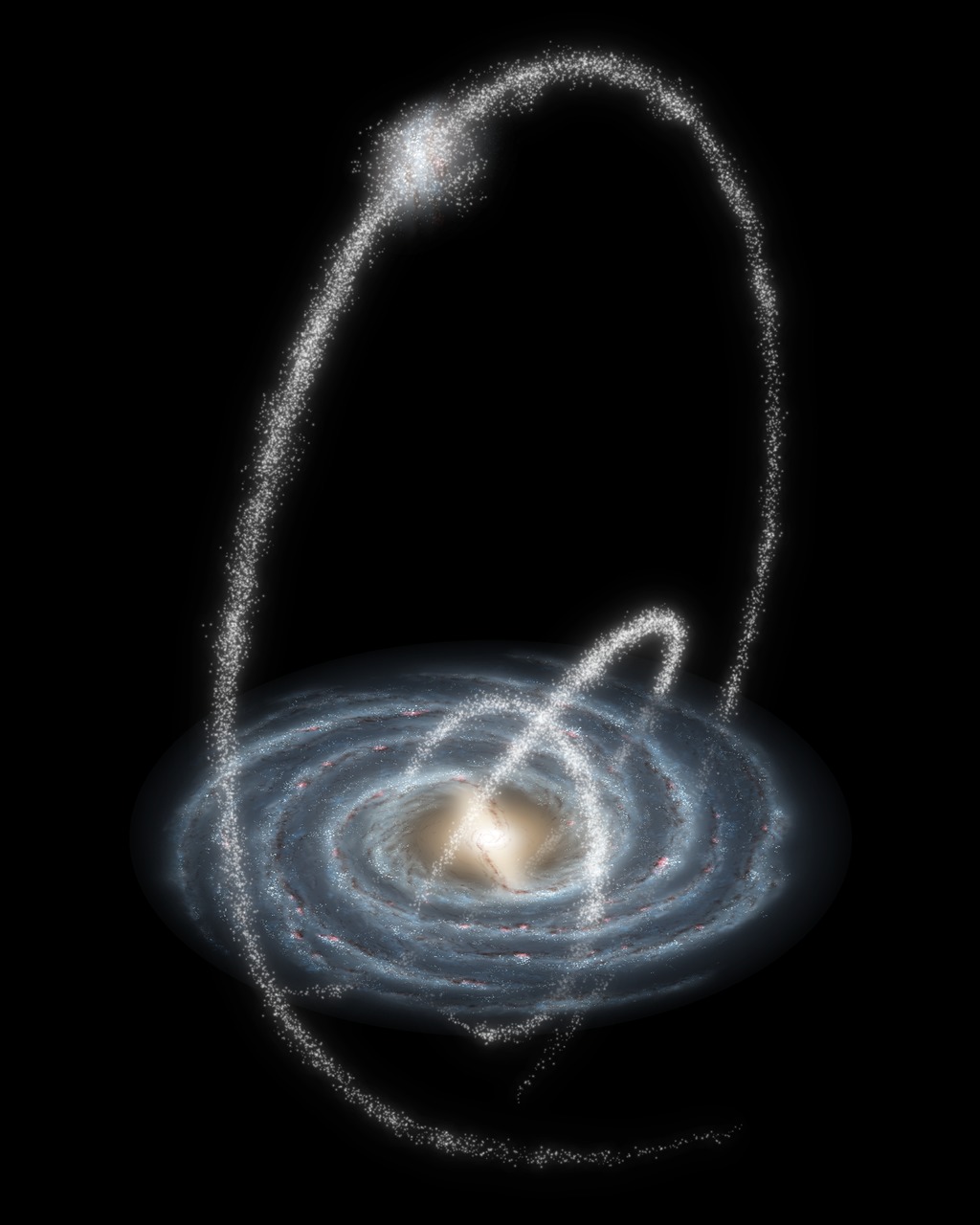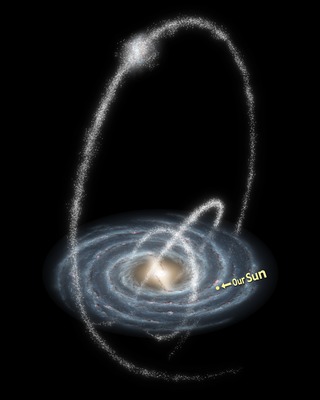
Credit: NASA/JPL-Caltech/R. Hurt (SSC/Caltech)
Artwork • May 30th, 2007 • sig07-008a
sig07-008a
Three newly-discovered streams arcing high over the Milky Way Galaxy are remnants of cannibalized galaxies and star clusters. The streams are between 13,000 and 130,000 light-years distant from Earth and extend over much of the Northern sky.
Two of the newly discovered streams are almost certainly the remains of ancient star clusters. Known to astronomers as globular clusters, these giant stellar cities contain between tens of thousands and millions of stars. Though only about 150 globular clusters orbit the Milky Way today, they may once have numbered in the thousands.
Over billions of years, the relentless gravitational stresses inflicted on them by our galaxy have slowly torn them apart, leaving behind long, thin streams of stars. Once crowded so closely together that they could sometimes actually collide, these stars are now separated by many light-years, trailing one another at half a million miles an hour through the dark and lonely reaches of the galactic halo.
The third stream is spread over a much larger region of the sky, and is most likely the scattered remains of a dwarf galaxy. Such dwarf galaxies may contain up to 100 million stars, along with sometimes substantial amounts of mysterious "dark matter." While the Milky Way galaxy currently hosts a family of 20 or so known dwarf galaxies, scientists who study the growth of galaxies in the early universe have long been puzzled as to why we don't see hundreds of them.
About the Object
- Name
- Milky Way
- Type
- Galaxy > Type > Spiral
- Galaxy > Type > Barred
- Galaxy > Activity > Normal





